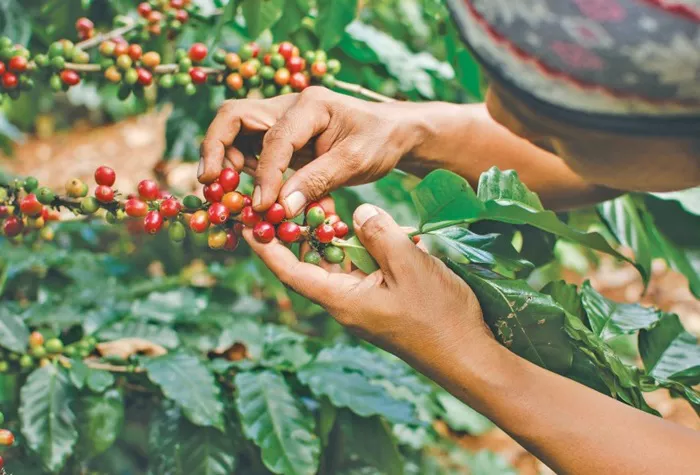Coffee prices rose on Tuesday, with arabica coffee reaching a six-week high and robusta coffee hitting a three-week high. December arabica (KCZ24) gained 2.87%, closing up by 7.35 cents, while January robusta (RMF25) saw a 1.36% increase, adding 61 points.
The rally in prices was fueled by a combination of supply shortages and weather challenges. In Brazil, farmers are withholding coffee sales, hoping for higher prices, which has tightened available supplies. Additionally, forecasts of hot, dry weather continuing in Minas Gerais—Brazil’s largest arabica-producing region—are adding upward pressure on arabica prices. Meteorologists at Climatempo reported on Monday that after some brief rainfall mid-week, the region will experience hotter and drier conditions for the next ten days.
In the robusta sector, tight supplies are also driving prices higher. Vietnam, the world’s largest robusta producer, saw a sharp decline in coffee exports. According to the General Department of Customs, October coffee exports from Vietnam fell by 11.6% compared to September, totaling 45,412 metric tons. Furthermore, year-to-date exports from January to October were down 11.1% year-on-year, amounting to 1.15 million metric tons. The country’s coffee harvest is also under threat due to heavy rains, which could flood coffee fields and delay harvesting.
The price surge in coffee also reflects concerns over long-term crop damage. Brazil has been experiencing its driest conditions since 1981, with rainfall levels well below average since April. This has hurt coffee trees during their flowering stage, significantly reducing the forecast for Brazil’s 2025/26 arabica crop. The National Institute for Space Research (INPE) has called the situation a “natural disaster.”
Robusta coffee prices are additionally supported by reduced production levels. In March, Vietnam’s agriculture department reported a 20% drop in robusta coffee production for the 2023/24 season, with output falling to 1.472 million metric tons, the smallest in four years. The USDA also projected a slight dip in Vietnam’s robusta production for 2024/25, forecasting a decrease to 27.9 million bags, compared to 28 million in the previous season.
Meanwhile, Brazil’s coffee production outlook for 2024 was revised downward by Conab, the country’s crop forecasting agency, which reduced its estimate to 54.8 million bags, down from 58.8 million bags projected earlier in the year.
However, some bearish factors are also influencing the coffee market. The International Coffee Organization (ICO) reported last Friday that global coffee exports in September increased by 25% year-on-year to 10.76 million bags. Additionally, global exports from October to September rose by 11.7% compared to the previous year, totaling 137.27 million bags.
Rainfall in Brazil’s Minas Gerais region has added pressure to coffee prices, as Somar Meteorologia reported on Monday that the area received 123.9 mm of rain last week—349% of the historical average. While this rainfall could temporarily ease drought conditions, it may also cause further uncertainty for producers.
Despite these bullish trends, signs of larger global coffee supplies are weighing on prices. The ICO projected global coffee production for the 2023/24 season would rise by 5.8% year-on-year to a record 178 million bags, driven by a strong off-biennial crop year. The ICO also forecast that global coffee consumption would climb by 2.2% to a record 177 million bags, resulting in a slight surplus of one million bags.
The U.S. Department of Agriculture (USDA) provided a bearish outlook in its bi-annual report, released in June, projecting a 4.2% increase in world coffee production for the 2024/25 season. This includes a 4.4% rise in arabica production and a 3.9% increase in robusta output. The USDA also expects global ending stocks to grow by 7.7% year-on-year to 25.78 million bags.
In Brazil, coffee exports saw a boost in October. Cecafe reported a year-on-year increase of 11% in green coffee exports, reaching 4.57 million bags. Furthermore, Brazil’s 2023/24 coffee exports rose by 33% compared to the previous year, setting a new record at 47.3 million bags.
Despite a rise in exports, the overall outlook for coffee prices remains supported by ongoing supply concerns and weather disruptions that threaten crop yields in key producing regions.
Related Topics:
- Winners from Brazil Announced in Cup of Excellence 2024
- Hot Deal: De’Longhi Espresso Machines 30% Off Now
- A Safe Space for Veterans to Reflect Over Coffee


